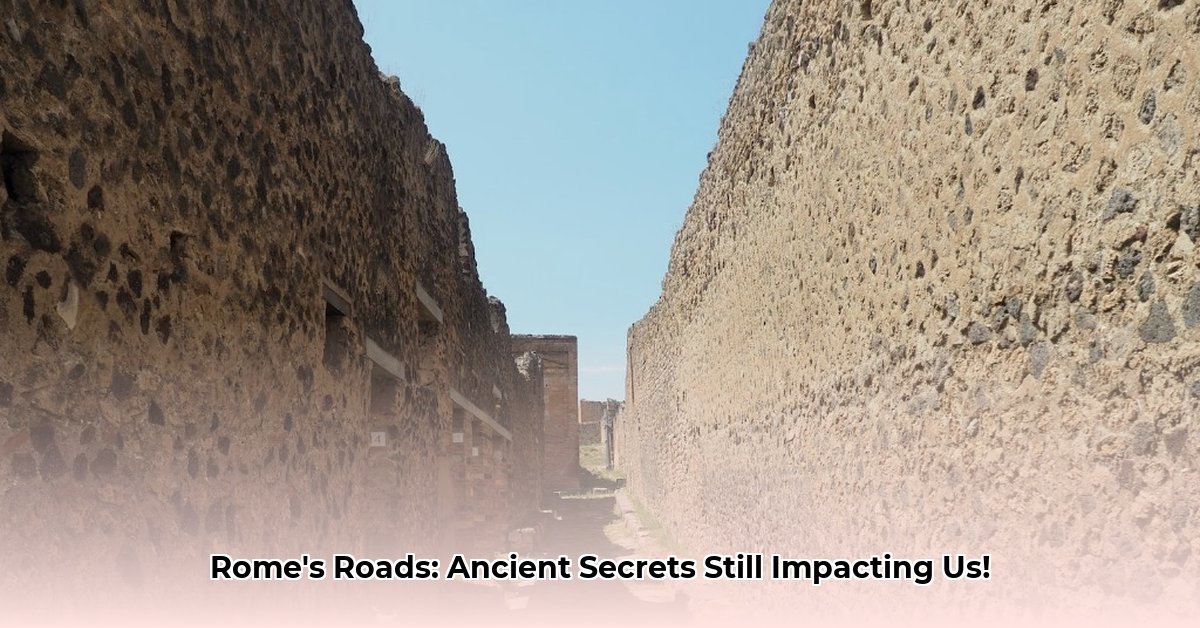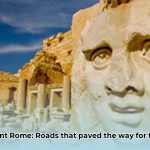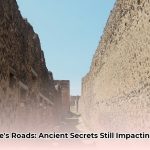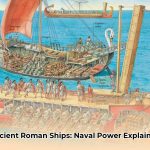Long after the legions marched their final steps, the silent stones of Roman roads continue to resonate with tales of empire, innovation, and a remarkably modern approach to infrastructure. These weren’t mere ancient paths; they were a testament to Roman ingenuity, boosting the empire’s growth, governance, and enduring longevity. From military arteries to vibrant commercial routes, these avenues facilitated an unparalleled connectivity that shaped the ancient world and continue to inform contemporary engineering.
Learn more about ancient Rome roads and their impact. These routes weren’t simple dirt tracks but complex feats of engineering, designed for immense durability and all-weather use. The construction, known as viam munire (the act of building a road), showcased Roman creativity in every stage: meticulous surveying, strategic excavation, intricate layering, and precise paving. Imagine the scale of the undertaking, connecting disparate regions and facilitating the movement of troops, goods, and ideas; they were, in essence, the ancient world’s superhighway system.
The Blueprint of Empire: Engineering Excellence
Ever wondered how the Roman Empire managed to control such a vast territory, spanning over 250,000 miles (400,000 kilometers) of interconnected routes, with approximately 50,000 miles (80,000 kilometers) paved? A significant part of the answer lies in their roads. These routes weren’t simple dirt tracks but complex feats of engineering, designed for immense durability and all-weather use. The construction, known as viam munire (the act of building a road), showcased Roman creativity in every stage: meticulous surveying, strategic excavation, intricate layering, and precise paving. Imagine the scale of the undertaking, connecting disparate regions and facilitating the movement of troops, goods, and ideas; they were, in essence, the ancient world’s superhighway system.
Roman engineers, known as agrimensores, employed sophisticated tools like the groma for sighting straight lines and the dioptra for leveling to ensure the proposed route was as direct as possible. They famously prioritized straightness, often cutting through hills, diverting creeks, and bridging valleys to achieve their goal. Obstacles like mountains were overcome with ambitious tunnels, such as the 1,000-meter-long Cumaea, the 705-meter Cripta Neapolitano, or the 780-meter Grotta di Seiano, often excavated simultaneously from both ends, a feat requiring precise geometric calculations.
The construction process was far from haphazard. A typical road involved multiple meticulously laid layers, ensuring durability and effective drainage:
* Statumen: The bottom layer, consisting of large stones, rubble, or even wooden piles in marshy areas, provided a stable foundation.
* Rudus: A middle layer of smaller stones or gravel mixed with lime or crushed brick, compacted to create a solid sub-base.
* Nucleus: A finer layer of sand, crushed stones, or concrete (often utilizing pozzolana, a volcanic ash, for superior strength), forming a dense core.
* Pavimentum or Summum Dorsum: The surface layer, often made of large, flat, precisely fitted stones of volcanic tuff, basalt, or limestone blocks. These stones were sometimes polished in urban areas.
Drainage was absolutely crucial; the Romans understood that water was the enemy of infrastructure. Roads were designed with a convex shape, sloping slightly from the center down to the edges, allowing rainwater to flow into parallel ditches or drainage canals. In particularly rainy regions, roads were sometimes nestled on raised berms known as aggers to prevent flooding. Regular repairs to the surface, clearing ditches, and replacing damaged stones ensured these routes remained functional for centuries. The Via Appia (Appian Way), initiated in 312 BCE by Censor Appius Claudius Caecus, exemplifies this engineering brilliance. Known to the Romans as the Regina viarum or ‘Queen of Roads,’ its initial 196 km (132 Roman miles) section to Capua was built in a remarkably straight line, later extended to 569 km (385 Roman miles) to reach Brundisium. Sections of this road are still visible and utilized today, millennia after its initial construction, alongside iconic bridges like the Milvian Bridge in Rome (109 BCE) and the majestic bridge over the Tagus River at Alcántara (106 BCE) on the Spanish-Portuguese border.
Arteries of Conquest: Military Mobility and Imperial Control
Roman roads were, first and foremost, strategic military assets. The legions, Rome’s primary military organization, relied on fast and efficient routes for troop movement, provisioning, and communication. Pathways such as the Via Appia, the Via Egnatia (linking the Adriatic and Aegean Seas across the Balkans), and Watling Street in Britain proved essential for Rome’s assertion and maintenance of control over conquered lands. Soldiers, often organized into cohorts—the chief tactical units within a legion—could frequently march about 20 miles daily, enabling Roman forces to project power rapidly and decisively across their expansive territories. This formidable speed allowed for quick responses to rebellions and efficient deployment of forces, lessening the need for large, costly garrison units at frontier outposts and becoming a cornerstone of Roman military might.
The strategic placement and construction of these roads allowed Rome to dictate engagements rather than react to them, providing logistical superiority that was often as decisive as direct combat. The ability of the legion to move swiftly with its immense supplies—from food and equipment to siege engines like catapults and ballistae—was directly underpinned by the robust road network.
Highways of Prosperity: Trade, Communication, and Security
Beyond their martial utility, these passages profoundly accelerated trade and economic development. Major roads were standardized at about 4.2 meters wide, allowing two wheeled vehicles to pass easily. The Roman postal system, known as the cursus publicus, relied heavily on this network. Messages and dispatches were carried by couriers on horseback or chariots, moving swiftly across provinces, often covering as much as 60 miles in a single day. This was facilitated by mutationes (horse-changing stations) located every 10 miles, and mansiones (roadside hotels or full service stations) roughly every 20 miles, offering lodging, food, baths, and wagon repair for travelers.
This vastly expanded market access spurred regional specialization. Market towns sprouted along these routes, transforming into vibrant hubs of activity and exchange, boosting local economies and state revenue. Goods, from agricultural produce and olive oil to luxury items and spices, flowed with unprecedented ease, solidifying the roads’ role as the very lifeblood of Roman commerce.
To combat the activities of thieves and highwaymen, most Roman roads were patrolled by special detachments of imperial army troops known as stationarii and beneficiarii. These soldiers manned police posts and watchtowers in both high-traffic and remote areas, guiding vulnerable travelers, relaying messages, and keeping an eye out for runaway slaves. They also doubled as toll collectors, levying fees or taxes on goods when routes reached bridges, mountain passes, or provincial borders, akin to modern highways.
Weaving the Empire: Cultural Exchange and Unity
The Roman roads facilitated another crucial, though less tangible, function: cultural exchange. These meticulously constructed pathways served as channels for transmitting new ideas, religious beliefs, and technological advancements. As people interacted, traded, and settled in new areas, Romanization—the adoption of Roman culture, language, and customs—spread organically. Early Christianity, for instance, significantly benefited from this extensive network, with missionaries like Paul utilizing the roads to spread their message across the empire with surprising speed. In a profound way, these roads were the information superhighway of their time, fostering a shared identity and cultural framework across diverse regions, creating a truly interconnected empire.
Adorned with triumphal arches at their beginning and end, and punctuated by milestones every few miles—often detailing who was responsible for upkeep and repairs—these routes also served as powerful symbols of Roman rule and imperial power. The Emperor Augustus even saw to the placement of a “golden milestone” (Milliarium Aureum) in the Roman Forum, listing the distances to all the city’s gates and serving as the symbolic convergence point of the entire imperial road system.
Much of what historians know about Rome’s road system comes courtesy of a single remarkable artifact: the Peutinger Table. This 13th-century copy of a 4th-century AD Roman map is drawn on a 22-foot-long collection of parchment, depicting the entire Roman world in full color. It includes thousands of place names, illustrations of cities, lighthouses, bridges, inns, and tunnels, along with the precise distances between various cities and landmarks. The Peutinger Table has proven indispensable to scholars studying the Roman transit system, offering a unique glimpse into the network’s expanse and functionality.
Echoes in Stone: Enduring Lessons for the Modern World
The ingenuity of Roman road construction and their profound impact on society offer remarkable insights for various contemporary fields, proving that good design truly is timeless.
For Scholars and Engineers
| Timeframe | Action |
|---|---|
| Short-Term (0-1 Year) | Initiate detailed regional studies of Roman road construction techniques, focusing on material sourcing, compaction methods, and environmental adaptations in diverse geographies. Utilize advanced remote sensing technologies (LiDAR, ground-penetrating radar) to identify and map undocumented or poorly documented road segments, particularly in overgrown or remote areas, and cross-reference with historical texts like the Peutinger Table for verification. |
| Long-Term (3-5 Years) | Establish interdisciplinary research collaborations between archaeologists, civil engineers, and materials scientists to conduct comprehensive analyses of surviving Roman road materials, including concrete with pozzolana, to extract insights into durable and sustainable road construction. Develop and test modern road prototypes incorporating Roman principles of multi-layered foundations, cambered surfaces, and integrated drainage systems, aiming to significantly extend pavement lifespan and reduce maintenance costs compared to conventional designs. Engage in international partnerships to create open-source databases of Roman road data, including GIS mapping, construction details, and historical usage patterns, to serve as a global resource for heritage preservation and engineering innovation. |
For the Tourism Sector
| Timeframe | Action |
|---|---|
| Short-Term (0-1 Year) | Develop specialized guided tours focusing on accessible and well-preserved Roman road sections, such as segments of the Via Appia or Watling Street, highlighting their engineering marvels and historical significance. Implement interactive digital guides and augmented reality applications that overlay historical context onto physical sites, enhancing visitor engagement and understanding of daily life along these ancient routes. Establish strict visitor management protocols, including designated pathways and limited group sizes, at vulnerable archaeological sites to minimize physical impact and preserve delicate remains. |
| Long-Term (3-5 Years) | Invest in the creation of immersive virtual reality experiences that allow global audiences to explore extensive Roman road networks and associated mutationes or mansiones, providing access to those unable to visit in person while also serving as a sustainable alternative to mass physical tourism. Partner with local communities along ancient routes to develop culturally sensitive tourism products, such as artisanal markets or traditional craft workshops, ensuring economic benefits are directly linked to heritage preservation. Design and promote “Roman Road Grand Tours” that connect multiple historical sites across different regions or countries, fostering a deeper appreciation for the empire’s logistical achievements and promoting cross-border cultural exchange. |
For Site Managers and Local Governance
| Timeframe | Action |
|---|---|
| Short-Term (0-1 Year) | Implement robust site protection measures, including increased surveillance, clear signage, and enhanced fencing, to deter vandalism and unauthorized excavations at vulnerable Roman road remnants. Establish dedicated, transparent funding mechanisms that channel a portion of tourism revenue directly into the maintenance, conservation, and archaeological study of Roman road sites. Enforce and regularly review zoning laws and urban planning regulations to prevent modern development from encroaching upon or damaging historically significant Roman infrastructure corridors. |
| Long-Term (3-5 Years) | Develop comprehensive, multi-stakeholder conservation strategies for extensive Roman road segments, bridges, and milestones, prioritizing stabilization and restoration efforts based on archaeological assessment and engineering feasibility. Foster strong partnerships with academic institutions, heritage organizations, and international bodies (e.g., UNESCO) to leverage expertise and secure additional funding for large-scale preservation projects. Integrate cultural heritage preservation into broader urban and regional development plans, repurposing ancient roads as greenways, historical walking paths, or sustainable transportation routes while ensuring their integrity is maintained for future generations. Establish educational programs in local schools and community centers to raise awareness about the historical significance and fragility of Roman road heritage, encouraging responsible citizenship and fostering a sense of shared stewardship. |
Decline and Everlasting Legacy
Of course, nothing truly lasts forever. With the economic troubles, persistent invasions, and shifting priorities that plagued the later Roman Empire, the meticulous maintenance of this vast network gradually declined. Still, many sections of these remarkable roads remained in use for centuries, a testament to their inherent durability and superior construction. Today, historians and archaeologists continue to research these avenues, gleaning invaluable insights into Roman daily life, engineering prowess, and broader societal structures. Notably, many modern routes across Europe and the Middle East still follow the ancient Roman paths, a silent acknowledgement of their enduring strategic and logistical brilliance. The principles embedded in their design—from multi-layered foundations to efficient drainage and direct routing—continue to inform contemporary engineers on sustainable and resilient infrastructure, proving that good design truly is timeless and its impact resonates across millennia.
- Unlock insights on ancient roman art paintings: Styles, techniques, historical context - August 18, 2025
- Lost Roman rings? Unveiling ancient Roman rings’ status in society [Context Reference] - August 18, 2025
- Decoding the Canvas: Ancient Rome Drawings Visualize Painting Techniques [Insights] - August 18, 2025
















